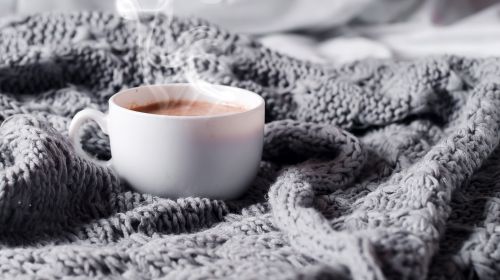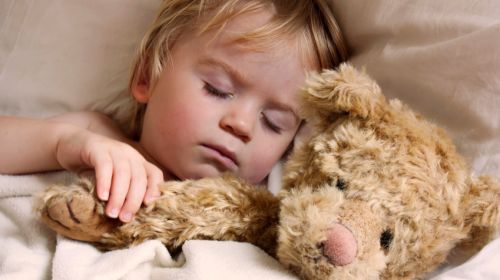Earache is particularly common in children and can be severe and persistent. They are often sudden and one-sided. Home remedies can help relieve symptoms. What to do if you have an earache and when to go to the doctor
Earache is not always caused by diseases of the ear itself. Instead, earaches often originate in other organs or regions in the head and neck area. In these cases, the pain radiates into the ear or is carried there by nerve tracts that run through the ear.
Article content at a glance:
How an earache feels
If the ear suddenly stings, pulls or burns, the person concerned suffers from ear pain (otalgia). Many sufferers complain of hearing impairment up to (temporary) hearing loss in the affected ear. Mostly they describe hearing "like through cotton wool". Headaches, dizziness, unsteadiness to walk and stand, or nausea can also occur. Reason: There is a direct connection between the inner ear and the organ of equilibrium.
Earache in children
Infants and children suffer particularly often Middle ear tube inflammation. The pain is extremely strong here. They are usually very persistent and pain killers are of little help. But there can also be classic childhood diseases such as mumps, which cause the parotid gland to become inflamed.
In adolescents, inflammation of the outer ear is more in the foreground. Also, occlusions of the ear canal due to wax and foreign bodies, damage to the eardrum or ear canal are not uncommon.
Home remedies for earache: what to do?
The first step is always that Pain relief. If the trigger is a foreign body in the ear, it is removed and injuries are treated surgically. If a nerve impairment in the cervical spine is the cause, it is indirectly improved by physiotherapy. Dental treatment may also be necessary, for example in the case of tooth decay or problems with the wisdom teeth. Painkillers with the active ingredients paracetamol or ibuprofen usually bring immediate relief.
Correct ventilation of the channels and tubes between the ear, nose and the middle ear is important. This can lead to pain, especially with swollen mucous membranes and runny nose. This often results in an otitis media. Decongestant nasal drops for tube ventilation have proven themselves here. They provide pressure relief for the swollen ear through the mouth and throat area. In rare cases, an eardrum incision may be necessary.
Home remedies: Onion wrap and heat relieve pain
Home remedies have proven effective for self-help with earache. The best known home remedies are warm onion wraps or an onion sachet. They often relieve earache, especially in children. Treatment with heat, for example with a red light lamp, can also relieve the pain. Drafts should be avoided in any case. A hat for outdoors is useful for earache.
Home remedies for earache at a glance
Onion sachets: Onion juice is anti-inflammatory. Chop a small onion into pieces and then heat them up in the microwave. Wrap the onion pieces in a clean piece of cotton fabric, such as a tissue handkerchief. Place it on the sore ear and secure it with a scarf or headband. Leave it there for two hours. Note that the onion smell will stick to the scarf or headband.
Chamomile bags: Wrap two tablespoons of chamomile flowers in a cotton cloth with some cotton wool. Warm the package on the heater or a hot water bottle to body temperature. Place the chamomile bag on the ear affected by the earache and secure it with a headband or hat.
Liquid: If an earache is accompanied by a cold, you should drink plenty of fluids so that the mucus liquefies. Drink plenty of water or tea. You can support your immune system with diluted fruit juices that contain vitamin C.
Warmth: For earache, treatment with heat can reduce the inflammation. For example, irradiate the affected ear with an infrared lamp. Be sure to protect your eyes.
Chewing gum helps prevent earache when flying. The "ventilation" of the ear is promoted by the movement of the jaw when chewing. Chewing gum can help, especially when there is pain due to pressure equalization when flying. The use of cotton swabs, on the other hand, should generally be avoided. Not only can they injure the ear canal and eardrum, but they can also push the wax backwards and clog the duct even more.
What can be behind an earache?
The causes and triggers for earache can be very diverse. They are often the result of a severe or delayed cold with an intense runny nose, because the pathogens enter the ear through the Eustachian tube. The very small tube connects the nose and throat with the middle ear.
Causes of earache in the ear itself
Otitis media: Violent, sudden earache, mostly one-sided. Typical are also hearing loss and purulent discharge from the ear, possibly also fever, headache, dizziness.
Inflammation of the external ear canal (otitis externa): Pain, itching up to purulent discharge from the ear. This can be triggered by the smallest injuries, for example caused by cleaning the ear canal with cotton swabs. Even after diving or long baths, the external ear canal can be irritated and prone to inflammation ("swimmer's ear").
Mastoiditis (mastoiditis): Mostly one-sided ear pain, strong sensitivity to pressure in the swollen area behind the ear (mastoid process), purulent discharge, protruding auricle as a result of the swelling.
Tubular catarrh: A negative pressure is created in the middle ear, which causes inflammation. This happens when the pressure cannot be equalized through the passage to the throat, for example because of a throat infection with swelling. The negative pressure in the ear occurs due to the pressure changes in the aircraft cabin, especially after air travel; typical is a feeling of pressure and a noise in the ear, as well as hearing loss.
boil in the external auditory canal or on the auricle
Eardrum injuries (after a loud bang near the ear or after explosions, "bang trauma")
Foreign body in the ear canal (Ear wax, but also insects, legumes, marbles or toys)
injury of the ear
Pressure pain: When flying or diving due to changes in pressure in the ear.
External triggers and diseases
mumps (Inflammation of the parotid gland, parotitis): mainly infants and children are affected; swelling in front of and under the ear, pain when eating and chewing, and fever are typical
Sore throat (Pharyngitis) with an irritated throat and scratchy throat
Tonsillitis (Tonsillitis) with the characteristic, severe difficulty swallowing and whitish-yellow coatings on the tonsils
Breaking through the Wisdom teeth
Temporomandibular joint diseases (TMJ arthropathy)
Caries the molars and other tooth damage
Nerve pain in the facial nerve area (Trigeminal neuralgia), which appear in a flash and are usually barely bearable.
Nerve impairment in the cervical spine area (Cervical neuralgia)
Shingles (herpes zoster) around the ear
Cancers in the throat (pharyngeal carcinoma)
This is how the doctor examines an earache
Earache should usually be clarified by an ENT doctor, as the sensitivity of the hearing organ can lead to complications and permanent hearing damage even with many seemingly harmless diseases. If the inflammation spreads, a visit to the doctor should not be delayed so that the disease does not spread to the middle ear or the ear cartilage.
Examinations of the ear:
The physical examination – especially of the head and neck – and the medical history usually provide clues as to the cause of the earache. It is of particular interest whether the pain developed slowly or quickly, occurs on one or both sides, is persistent or fluctuates, whether there are hearing impairments and how long they have existed. Swelling, redness and tenderness often indicate the exact starting point of the symptoms.
The inner sections of the external auditory canal and changes on or behind the eardrum can be assessed by means of an otoscopy. Audiometry records impairments of hearing.
In some cases, additional examination procedures such as a laboratory examination or imaging procedures such as ultrasound or X-ray examination may be necessary.


